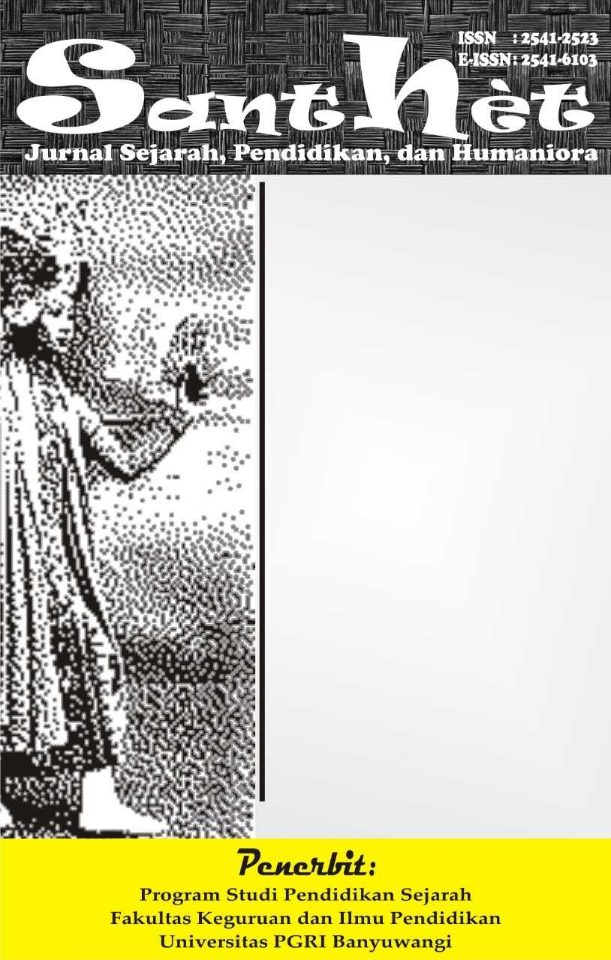The Influence of Trust, Perceived Usefulness, Perceived Ease of Use, Perceived Risk, and Perceived Security on Continuance Intention e-wallet ShopeePay on Generation Z in Padang City mediated by Consumer Attitude and Consumer Engagement
Pengaruh Trust, Perceived Usefulness, Perceived Ease of Use, Perceived Risk dan Perceived Security terhadap Continuance Intention e-wallet ShopeePay pada Generasi Z di Kota Padang yang dimediasi oleh Consumer Attitude dan Consumer Engagement
DOI:
https://doi.org/10.36526/santhet.v9i1.5039Keywords:
Trust, perceived usefulness, perceived ease of use, perceived perceived risk, perceived security,Abstract
This study examines the influence of trust, perceived usefulness, perceived ease of use, perceived risk and perceived security on the continuance intention of ShopeePay e-wallet with consumer attitude and consumer engagement as mediators. An online survey was conducted to collect data from 202 Shopeepay users in Padang City. Data analysis used Partial Least Squares Structual Equation Modeling (PLS-SEM) to evaluate the relationship between variables. The results showed that Trust and Perceived Risk each had no significant effect on Consumer Attitude. In addition, Perceived Usefulness, Perceived Ease of Use, and Perceived Security were found to have a positive and significant effect on Consumer Attitude. Furthermore, consumer attitude was found to have a positive and significant effect on Consumer Engagement. And Consumer Engagement was found to have a positive and significant effect on Continuance Intention. Finally, Consumer Attitude was found to have a positive and significant effect on Continuance Intention.
References
Alareeni, B., & Hamdan, A. (2022). Financial Technology (FinTech), Entrepreneurship, and Business Development. https://doi.org/https://doi.org/10.1007/978-3-031-08087-6
Alhassan, M. D., Kolog, E. A., & Boateng, R. (2020). Effect of gratification on user attitude and continuance use of mobile payment services: a developing country context. Journal of Systems and Information Technology, 22(4), 353–380. https://doi.org/10.1108/JSIT-01-2020-0010
Arvidsson, N. (2014). Consumer attitudes on mobile payment services - results from a proof of concept test. International Journal of Bank Marketing, 32(2), 150–170. https://doi.org/10.1108/IJBM-05-2013-0048
Bernd W. Wirtz. (2024). DIGITAL BUSINESS AND E-COMMERCE MANAGEMENT. https://doi.org/https://doi.org/10.1007/978-3-031-50289-7
Brahanta, G. P., & Wardhani, N. I. K. (2021). Pengaruh Persepsi Kebermanfaatan, Kemudahan, Risiko Terhadap Menggunakan Ulang Shopeepay di Surabaya. Journal Sain Manajemen, 7 No. 2.
Cheng, X., Zhang, X., Cohen, J., & Mou, J. (2022). Human vs. AI: Understanding the impact of anthropomorphism on consumer response to chatbots from the perspective of trust and relationship norms. Information Processing & Management, 59(3), 102940. https://doi.org/10.1016/j.ipm.2022.102940
Daragmeh, A., Sági, J., & Zéman, Z. (2021). Continuous intention to use e-wallet in the context of the covid-19 pandemic: Integrating the health belief model (hbm) and technology continuous theory (tct). Journal of Open Innovation: Technology, Market, and Complexity, 7(2). https://doi.org/10.3390/joitmc7020132
Davis, F. D., & Granić, A. (2024). SpringerBriefs in Human-Computer Interaction The Technology Acceptance Model 30 Years of TAM.
Duy Phuong, N. N., Luan, L. T., Van Dong, V., & Le Nhat Khanh, N. (2020). Examining customers’ continuance intentions towards e-wallet usage: The emergence of mobile payment acceptance in Vietnam. Journal of Asian Finance, Economics and Business, 7(9), 505–516. https://doi.org/10.13106/JAFEB.2020.VOL7.NO9.505
Fan, J., Shao, M., Li, Y., & Huang, X. (2018). Understanding users’ attitude toward mobile payment use: A comparative study between China and the USA. Industrial Management and Data Systems, 118(3), 524–540. https://doi.org/10.1108/IMDS-06-2017-0268
Flavian, C., Guinaliu, M., & Lu, Y. (2020). Mobile payments adoption – introducing mindfulness to better understand consumer behavior. International Journal of Bank Marketing, 38(7), 1575–1599. https://doi.org/10.1108/IJBM-01-2020-0039
Ghozaly, I., & Latan, H. (2020). Partial Least Squares Konsep, Metode dan Aplikasi Menggunakan Program WARPPLS 4.0 (2nd ed.). Universitas Diponegoro.
Glavee-Geo, R., Shaikh, A. A., Karjaluoto, H., & Hinson, R. E. (2019). Drivers and outcomes of consumer engagement. International Journal of Bank Marketing, 38(1), 1–20. https://doi.org/10.1108/IJBM-01-2019-0007
Gupta, K., & Arora, N. (2020). Investigating consumer intention to accept mobile payment systems through unified theory of acceptance model: An Indian perspective. South Asian Journal of Business Studies, 9(1), 88–114. https://doi.org/10.1108/SAJBS-03-2019-0037
Hair, J. F., Risher, J. J., Sarstedt, M., & Ringle, C. M. (2019). When to use and how to report the results of PLS-SEM. European Business Review, 31(1), 2–24. https://doi.org/10.1108/EBR-11-2018-0203
Hardani MSi, A., Ustiawaty, J., & Juliana Sukmana, D. (2020). Buku Metode Penelitian Kualitatif & Kuantitatif. https://www.researchgate.net/publication/340021548
Hasna, F. N., & Trifiyanto, K. (2023). Pengaruh Perceived Usefulness, Perceived Security, dan Confirmation Terhadap Kepuasan Pengguna Fintech E-wallet DANA (Studi pada Pengguna E-wallet DANA Kabupaten Kebumen). In Jurnal Ilmiah Mahasiswa Manajemen (Vol. 5, Issue 5). https://jurnal.universitasputrabangsa.ac.id/index.php/jimmba/index
Helen Minarto, A., Felita, E., Thio, S., Manajemen Perhotelan, P., Studi Manajemen, P., & Bisnis dan Ekonomi, F. (n.d.). PEMESANAN HOTEL DI TRAVELOKA. Jurnal Manajemen Perhotelan, 7(1), 1–9. https://doi.org/10.9744/jmhot.7.1.1-9
Istijanto, & Handoko, I. (2022). Customers’ continuance usage of mobile payment during the COVID-19 pandemic. Spanish Journal of Marketing - ESIC, 26(3), 345–362. https://doi.org/10.1108/SJME-02-2022-0016
Kavitha, K., & Kannan, D. (2020). Article ID: IJM_11_04_015 Cite this Article: K. Kavitha and Dr. D. Kannan, Factors Influencing Consumers Attitude towards Mobile Payment Applications. International Journal of Management, 11(04), 140–150. http://www.iaeme.com/IJM/index.asp140http://www.iaeme.com/ijm/issues.asp?JType=IJM&VType=11&IType=4JournalImpactFactor
Khalilzadeh, J., Ozturk, A. B., & Bilgihan, A. (2017). Security-related factors in extended UTAUT model for NFC based mobile payment in the restaurant industry. Computers in Human Behavior, 70, 460–474. https://doi.org/10.1016/j.chb.2017.01.001
Kim, K. H., Kim, K. J., Lee, D. H., & Kim, M. G. (2019). Identification of critical quality dimensions for continuance intention in mHealth services: Case study of onecare service. International Journal of Information Management, 46, 187–197. https://doi.org/10.1016/j.ijinfomgt.2018.12.008
Kittisak Jermsittiparsert, & Nutnapha Lekhawichit. (2024). Consumer and Organizational Behavior in the Age of AI. IGI Global. https://doi.org/10.4018/979-8-3693-8850-1.ch001
Koloseni, D., & Mandari, H. (2017). Why Mobile Money Users Keep Increasing? Investigating the Continuance Usage of Mobile Money Services in Tanzania. Journal of International Technology and Information Management, 26(2), 117–145. https://doi.org/10.58729/1941-6679.1312
Laksamana, P., Suharyanto, S., & Cahaya, Y. F. (2023). Determining factors of continuance intention in mobile payment: fintech industry perspective. Asia Pacific Journal of Marketing and Logistics, 35(7), 1699–1718. https://doi.org/10.1108/APJML-11-2021-0851
Len Mei. (2022). Fintech Fundamentals.
Markus, M. L. (2016). why break the habit of a lifetime? rethinking the roles of intention, habit, and emotion in continuing information technology use. 3, 433–444.
Mohd Naved, V. Ajantha Devi, & Aditya Kumar Gupta. (2023). Fintech and Cryptocurrency.
Naved, M., Devi, V. A., & Gupta, A. K. (2023). Fintech and Cryptocurrency.
Qing, T., & Haiying, D. (2021). How to achieve consumer continuance intention toward branded apps—from the consumer–brand engagement perspective. Journal of Retailing and Consumer Services, 60. https://doi.org/10.1016/j.jretconser.2021.102486
Rahman, S. ur, Nguyen-Viet, B., Nguyen, Y. T. H., & Kamran, S. (2024). Promoting fintech: driving developing country consumers’ mobile wallet use through gamification and trust. International Journal of Bank Marketing, 42(5), 841–869. https://doi.org/10.1108/IJBM-01-2023-0033
Ramaswamy, S., Shankaranarayana, R., & Akanfe, O. O. (2024). Data Security and Consumer Trust in Fintech Adoption (pp. 281–294). IGI Global. https://doi.org/10.4018/979-8-3693-2346-5.ch018
Sangwan, V., Harshita, Prakash, P., & Singh, S. (2020). Financial technology: a review of extant literature. In Studies in Economics and Finance (Vol. 37, Issue 1, pp. 71–88). Emerald Group Holdings Ltd. https://doi.org/10.1108/SEF-07-2019-0270
Schiffman, L., & Wisenblit, J. (2019). Consumer Behavior.
Singh, G., Goel, R., & Garg, V. (2023). Industry 4.0 and the Digital Transformation of International Business. https://doi.org/https://doi.org/10.1007/978-981-19-7880-7
Solomon, M. R. (2019). Consumer Behaviour: Buying, Having, and Being. www.pearson.com/mylab/marketing
Sugiyono. (2019). Metode penelitian kuantitatif kualitatif dan R&D / Sugiyono (19th ed.). Alfabeta Bandung.
Weng, G. S., Zailani, S., Iranmanesh, M., & Hyun, S. S. (2017). Mobile taxi booking application service’s continuance usage intention by users. Transportation Research Part D: Transport and Environment, 57, 207–216. https://doi.org/10.1016/j.trd.2017.07.023
Wong, D., Liu, H., Meng-Lewis, Y., Sun, Y., & Zhang, Y. (2022). Gamified money: exploring the effectiveness of gamification in mobile payment adoption among the silver generation in China. Information Technology and People, 35(1), 281–315. https://doi.org/10.1108/ITP-09-2019-0456





























